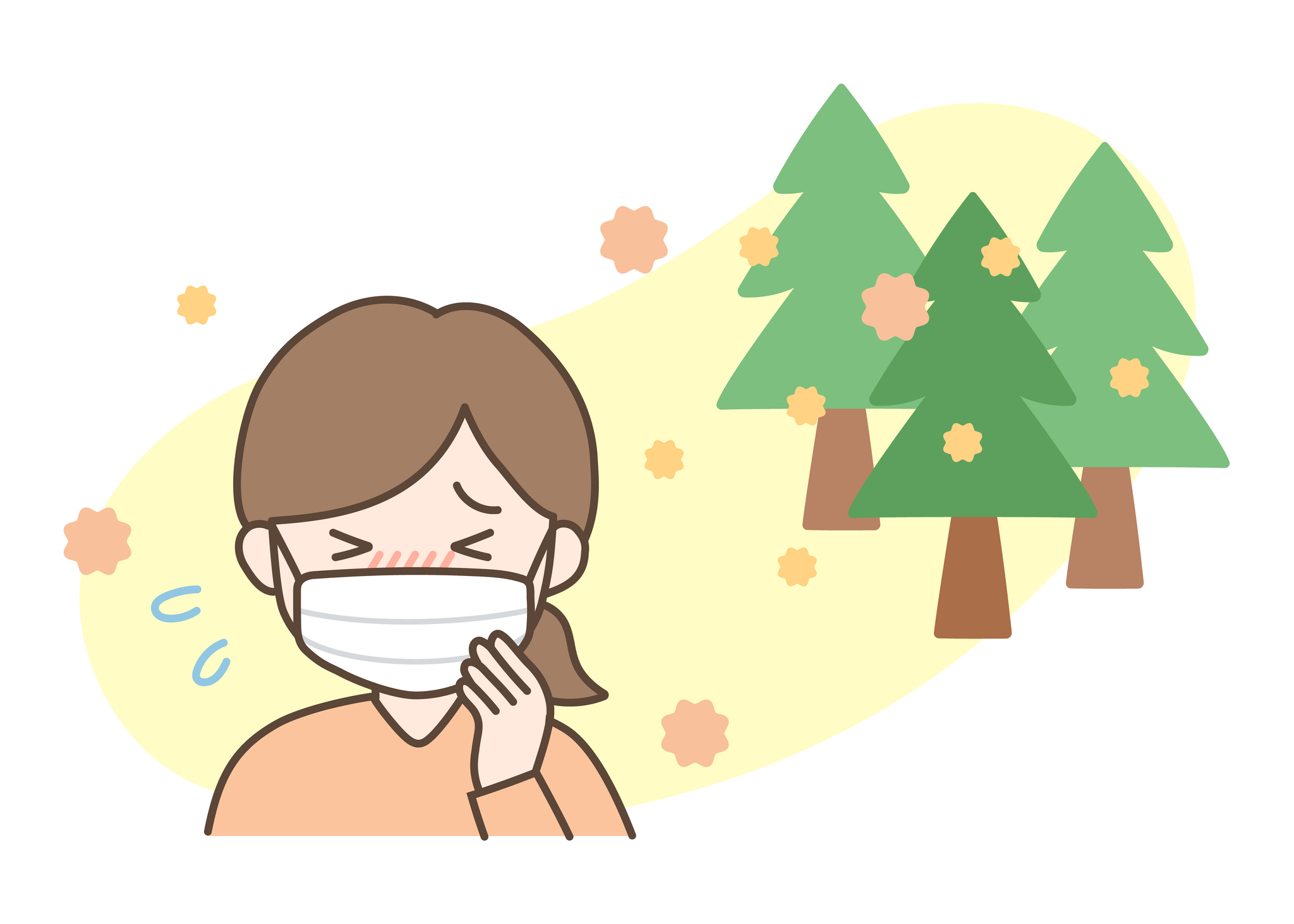How to treat allergic hay fever? Medication, immunotherapy and adherence to treatment
The treatment of hay fever is based on 3 steps:
1. Elimination of the allergen.
The basis of successful treatment of hay fever is good cooperation of the patient. This consists of a proactive approach, adherence to regimen and lifestyle modification.
Adherence to individual measures is very important, especially ensuring a dust-free environment in the home or minimising exposure to allergenic pollens.

The following measures are recommended:
- It is recommended to limit outdoor exercise during peak pollen periods.
- Regularly monitor the pollen situation in your region (pollen bulletin).
- Wear pollen masks, breathe more through your nose than your mouth and wear eye protection (sports goggles) when participating in outdoor sports activities.
- Take a shower, wash your hair and face and change your clothes every time you return from being outdoors.
- Do not leave clothes you wore outside in your bedroom.
- The best time to be outdoors is after it has rained.
- Use dust nets in apartments and houses.
- Use air purifiers in the home.
- One effective anti-dust measure is increased nasal hygiene (regular rinses).
- For allergy sufferers, stays at the seaside and in spas, rehabilitation, therapy in caves are very beneficial.

2. Specific allergen immunotherapy (hyposensitization, desensitization)
Specific allergen immunotherapy is used to influence the allergic reaction. It induces a state of so-called allergen tolerance. This treatment method consists in the long-term administration of a modified allergen.
As a result of the treatment, the symptoms of hay fever are alleviated. The risk of complications is also reduced.
3. Pharmacotherapy
The following products are used in practice to treat hay fever:
1. Antihistamines
Antihistamines are the most commonly used group of drugs in the treatment of hay fever. They are used to suppress allergic symptoms. They also have a prophylactic effect. They are available on the market in oral or topical dosage forms (nasal and eye drops).
In practice, the following drugs are used:
- second-generation non-sedating antihistamines (cetirizine, loratadine)
- third-generation antihistamines (desloratadine - active metabolite of loratadine, levocetirizine - isomer of cetirizine)
- newer antihistamines (fexofenadine)
- orodispersible tablets of loratadine, desloratadine, fexofenadine
- topical antihistamines (nasal decongestants levokabastin, azelastine)
2. Corticosteroids
Corticosteroids are used prophylactically and on a long-term basis, especially in the period before the start of the pollen season. Their onset of action is slow. For this reason, they are not used for immediate relief of symptoms.
They are available on the market in topical form (nasal drops). Nasal drops are used for moderate to severe hay fever. They are applied 1 to 2 times a day.
Topical corticosteroids include:
- beclomethasone
- budenoside
- mometasone
- fluticasone
3. Cromones
Cromones are used in allergy prophylaxis. Their advantage is that they are also suitable for children. The mechanism of action of cromones is to stabilise the cell membranes of mast cells, which then find it more difficult to release mediators of inflammation.
There is a product on the market that contains the medicinal substance sodium cromoglycate, which prevents the release of substances (histamine and many other substances) responsible for triggering an allergic reaction. It also has an anti-inflammatory and anti-allergic effect.
4. Decongestants
Decongestants are characterized by a pronounced effect on nasal patency. It is important to know that their use for more than 10 days can lead to the development of medicated rhinitis.
In practice, the following drugs are used:
- dimetindene
- phenylephrine
- nafazolin
- xylometazoline
- oxymetazoline
- tetryzoline










